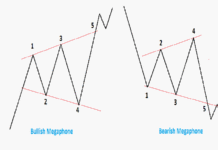
Trading gold can be a profitable endeavor, but it also carries significant risks. Developing a successful gold trading strategy requires a combination of technical analysis, fundamental analysis, risk management, and discipline. Here is a step-by-step guide to help you create a gold trading strategy:
Understand the Gold Market:
Start by gaining a deep understanding of the gold market. Know the factors that influence gold prices, such as economic indicators, geopolitical events, central bank policies, and market sentiment.
Choose a Trading Style:
Determine your trading style, whether it’s day trading, swing trading, or long-term investing. Your strategy will vary based on your chosen style.
Perform Technical Analysis:
Use technical analysis to identify potential entry and exit points. Common technical indicators for gold trading include moving averages, RSI (Relative Strength Index), MACD (Moving Average Convergence Divergence), and Fibonacci retracement levels. Pay attention to chart patterns like head and shoulders, double tops, and trendlines.
Analyze Fundamental Factors:
Stay informed about economic news and events that can impact gold prices. Factors like interest rates, inflation, currency movements, and geopolitical tensions can significantly affect gold. For example, gold often acts as a safe-haven asset during times of economic uncertainty.
Set Clear Entry and Exit Rules:
Define specific entry and exit criteria for your trades. This includes setting stop-loss and take-profit levels to manage risk. Stick to your rules to avoid emotional decision-making.
Risk Management:
Determine how much capital you’re willing to risk on each trade, and never risk more than you can afford to lose. A common rule is to risk no more than 1-2% of your trading capital on a single trade.
Diversify Your Portfolio:
Avoid putting all your capital into a single gold trade. Diversify your investments across different asset classes to spread risk.
Stay Informed:
Continuously monitor the gold market and stay updated on relevant news. Market conditions can change rapidly, and being informed is crucial for making informed trading decisions.
Backtesting:
Test your strategy on historical data to see how it would have performed in the past. This can help you identify weaknesses and fine-tune your approach.
Keep Emotions in Check:
Emotional trading can lead to poor decisions. Stick to your trading plan, and don’t let fear or greed dictate your actions.
Review and Adapt:
Regularly review your trading strategy and make necessary adjustments based on your performance and changing market conditions.
Consider Using Technical Tools:
Some traders use automated trading systems or trading software that can execute trades based on predefined criteria. These tools can help remove emotion from trading but should be used with caution and thoroughly tested.
There is no one-size-fits-all gold trading strategy. Your strategy should align with your risk tolerance, time commitment, and trading goals. Additionally, trading involves risks, and there is no guarantee of profits. It’s important to practice responsible trading and only invest what you can afford to lose. If you’re new to trading, consider starting with a demo account to gain experience before using real money.
Related Post:
Forex Trading Beginners Guide




























